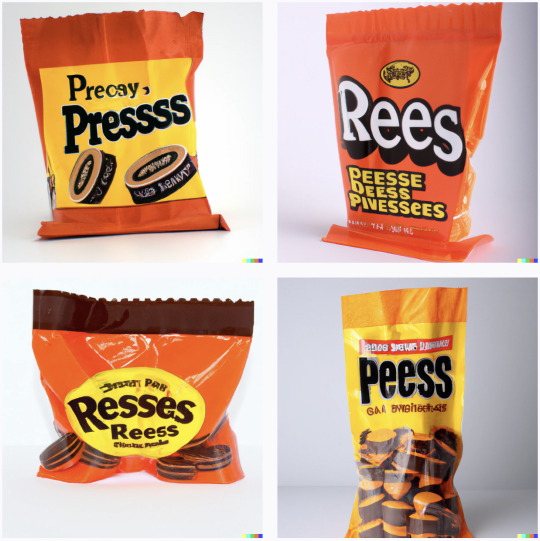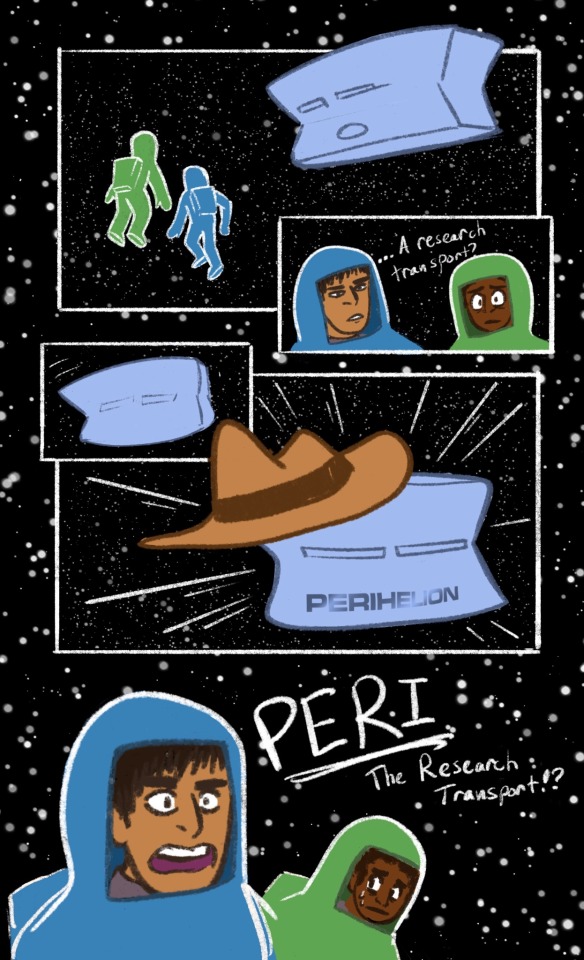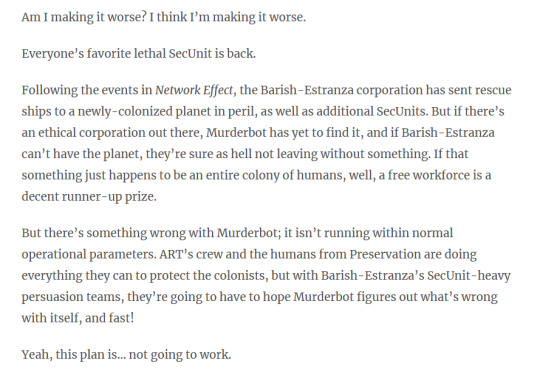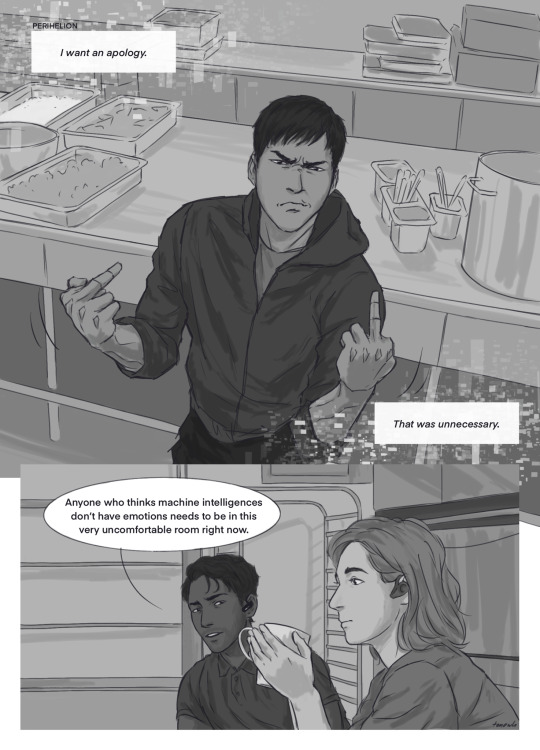#The Networking Effect
Explore tagged Tumblr posts
Text
cannot get over how ART had one of the most iconic character introductions of all time. in the span of 100 pages and a few weeks, it was like hey. if you mess with me i'll squash you like a bug. check out how i'm 10,000 times more powerful than you. wanna watch tv together? ah FUCK my tv blorbo died. what do you mean you won't tell me all the secrets of your dark past. can i do some surgery on you? do you need me to blow anything up? let me hijack your brain for a couple seconds. ok that went great! here's my number in case you ever need it
#murderbot#ange.book#typing this all out it being crazy and overprotective for much of network effect actually is remarkably on brand#it was always gonna be like yup. the best strategy to get my bestie back is dozens of missiles#murderbot diaries
7K notes
·
View notes
Text
Social Quitting

In “Social Quitting,” my latest Locus Magazine column, I advance a theory to explain the precipitous vibe shift in how many of us view the once-dominant social media platforms, Facebook and Twitter, and how it is that we have so quickly gone asking what we can do to get these services out of our lives to where we should go now that we’re all ready to leave them:
https://locusmag.com/2023/01/commentary-cory-doctorow-social-quitting/
The core of the argument revolves around surpluses — that is, the value that exists in the service. For a user, surpluses are things like “being able to converse with your friends” and “being able to plan activities with your friends.” For advertisers, surpluses are things like “being able to target ads based on the extraction and processing of private user data” and “being able to force users to look at ads before they can talk to one another.”
For the platforms, surpluses are things like, “Being able to force advertisers and business customers to monetize their offerings through the platform, blocking rivals like Onlyfans, Patreon, Netflix, Amazon, etc” and things like “Being able to charge more for ads” and “being able to clone your business customers’ products and then switch your users to the in-house version.”
Platforms control most of the surplus-allocating options. They can tune your feed so that it mostly consists of media and text from people you explicitly chose to follow, or so that it consists of ads, sponsored posts, or posts they think will “boost engagement” by sinking you into a dismal clickhole. They can made ads skippable or unskippable. They can block posts with links to rival sites to force their business customers to transact within their platform, so they can skim fat commissions every time money changes hands and so that they can glean market intelligence about which of their business customers’ products they should clone and displace.
But platforms can’t just allocate surpluses will-ye or nill-ye. No one would join a brand-new platform whose sales-pitch was, “No matter who you follow, we’ll show you other stuff; there will be lots of ads that you can’t skip; we will spy on you a lot.” Likewise, no one would sign up to advertise or sell services on a platform whose pitch was “Our ads are really expensive. Any business you transact has to go through us, and we’ll take all your profits in junk fees. This also lets us clone you and put you out of business.”
Instead, platforms have to carefully shift their surpluses around: first they have to lure in users, who will attract business customers, who will generate the fat cash surpluses that can be creamed off for the platforms’ investors. All of this has to be orchestrated to lock in each group, so that they won’t go elsewhere when the service is enshittified as it processes through its life-cycle.
This is where network effects and switching costs come into play. A service has “network effects” if it gets more valuable as users join it. You joined Twitter to talk to the people who were already using it, and then other people joined so they could talk to you.
“Switching costs” are what you have to give up when you leave a service: if a service is siloed — if it blocks interoperability with rivals — then quitting that service means giving up access to the people whom you left behind. This is the single most important difference between ActivityPub-based Fediverse services like Mastodon and the silos like Twitter and Facebook — you can quit a Fediverse server and set up somewhere else, and still maintain your follows and followers:
https://pluralistic.net/2022/12/23/semipermeable-membranes/#free-as-in-puppies
In the absence of interoperability, network effects impose their own switching cost: the “collective action problem” of deciding when to leave and where to go. If you depend on the people you follow and who follow you — for emotional support, for your livelihood, for community — then the extreme difficulty of convincing everyone to leave at the same time and go somewhere else means that you can be enticed into staying on a service that you no longer enjoy. The platforms can shift the surpluses away from you, provided that doing so makes you less miserable than abandoning your friends or fans or customers would. This is the Fiddler On the Roof problem: everyone stays put in the shtetl even though the cossacks ride through on the reg and beat the shit out of them, because they can’t all agree on where to go if they leave:
https://doctorow.medium.com/how-to-leave-dying-social-media-platforms-9fc550fe5abf
So the first stage of the platform lifecycle is luring in users by allocating lots of surplus to them — making the service fun and great and satisfying to use. Few or no ads, little or no overt data-collection, feeds that emphasize the people you want to hear from, not the people willing to pay to reach you.
This continues until the service attains a critical mass: once it becomes impossible to, say, enroll your kid in a little-league baseball team without having a Facebook account, then Facebook can start shifting its surpluses to advertisers and other business-users of the platform, who will pay Facebook to interpose themselves in your use of the platform. You’ll hate it, but you won’t leave. Junior loves little-league.
Facebook can enshittify its user experience because the users are now locked in, holding each other hostage. If Facebook can use the courts and technological countermeasures to block interoperable services, it can increase its users’ switching costs, producing more opportunities for lucrative enshittification without the risk of losing the users that make Facebook valuable to advertisers. That’s why Facebook pioneered so many legal tactics for criminalizing interoperability:
https://www.eff.org/cases/facebook-v-power-ventures
This is the second phase of the toxic platform life-cycle: luring in business customers by shifting surpluses from users to advertisers, sellers, etc. This is the moment when the platforms offer cheap and easy monetization, low transaction fees, few barriers to off-platform monetization, etc. This is when, for example, a news organization can tease an article on its website with an off-platform link, luring users to click through and see the ads it controls.
Because Facebook has locked in its users through mutual hostage-taking, it can pollute their feeds with lots of these posts to news organizations’ sites, bumping down the messages from its users’ friends, and that means that Facebook can selectively tune how much traffic it gives to different kinds of business customers. If Facebook wants to lure in sports sites, it can cram those sites’ posts into millions of users’ feeds and send floods of traffic to sports outlets.
Outlets that don’t participate in Facebook lose out, and so they join Facebook, start shoveling their content into it, hiring SEO Kremlinologists to help them figure out how to please The Algorithm, in hopes of gaining a permanent, durable source of readers (and thus revenue) for their site.
But ironically, once a critical mass of sports sites are on Facebook, Facebook no longer needs to prioritize sports sites in its users’ feeds. Now that the sports sites all believe that a Facebook presence is a competitive necessity, they will hold each other hostage there, egging each other on to put more things on Facebook, even as the traffic dwindles.
Once sports sites have taken each other hostage, Facebook can claw back the surplus it allocated to them and use it to rope in another sector — health sites, casual games, employment seekers, financial advisors, etc etc. Each group is ensnared by a similar dynamic to the one that locks in the users.
But there is a difference between users’ surpluses and business’s surpluses. A user’s surplus is attention, and there is no such thing as an “attention economy.” You can’t use attention to pay for data-centers, or executive bonuses, or to lobby Congress. Attention is not a currency in the same way that cryptos are not currency — it is not a store of value, nor a unit of exchange, nor or a unit of account.
Turning attention into money requires the same tactics as turning crypto into money — you have to lure in people who have real, actual money and convince them to swap it for attention. With crypto, this involved paying Larry David, Matt Damon, Spike Lee and LeBron James to lie about crypto’s future in order to rope in suckers who would swap their perfectly cromulent “fiat” money for unspendable crypto tokens.
With platforms, you need to bring in business customers who get paid in actual cash and convince them to give you that cash in exchange for ethereal, fast-evaporating, inconstant, unmeasurable “attention.” This works like any Ponzi scheme (that is, it works like cryptos): you can use your shareholders’ cash to pay short-term returns to business customers, losing a little money as a convincer that brings in more trade.
That’s what Facebook did when it sent enormous amounts of traffic to a select few news-sites that fell for the pivot to video fraud, in order to convince their competitors to borrow billions of dollars to finance Facebook’s bid to compete with Youtube:
https://doctorow.medium.com/metaverse-means-pivot-to-video-adbe09319038
This convincer strategy is found in every con. If you go to the county fair, you’ll see some poor bastard walking around all day with a giant teddy bear that he “won” by throwing three balls into a peach-basket. The carny who operated that midway game let him win the teddy precisely so that he would walk around all day, advertising the game, which is rigged so that no one else wins the giant teddy-bear:
https://boingboing.net/2006/08/27/rigged-carny-game.html
Social media platforms can allocate giant teddy-bears to business-customers, and it can also withdraw them at will. Careful allocations mean that the platform can rope in a critical mass of business customers and then begin the final phase of its life-cycle: allocating surpluses to its shareholders.
We know what this looks like.
Rigged ad-markets:
https://en.wikipedia.org/wiki/Jedi_Blue
Understaffed content moderation departments:
https://www.dw.com/en/twitters-sacking-of-content-moderators-will-backfire-experts-warn/a-63778330
Knock-off products:
https://techcrunch.com/2021/12/08/twitter-is-the-latest-platform-to-test-a-tiktok-copycat-feature/
Nuking “trust and safety”:
https://www.reuters.com/technology/twitter-dissolves-trust-safety-council-2022-12-13/
Hiding posts that have links to rival services:
https://www.makeuseof.com/content-types-facebook-hides-why/
Or blocking posts that link to rival services:
https://pluralistic.net/2022/12/19/better-failure/#let-my-tweeters-go
Or worse, terminating accounts for linking to rival services:
https://blog.joinmastodon.org/2022/12/twitter-suspends-mastodon-account-prevents-sharing-links/
That is, once a platform has its users locked in, and has its business customers locked in, it can enshittify its service to the point of near uselessness without losing either, allocating all the useful surplus in the business to its shareholders.
But this strategy has a problem: users and business customers don’t like to be locked in! They will constantly try to find ways to de-enshittify your service and/or leave for greener pastures. And being at war with your users and business customers means that your reputation continuously declines, because every time a user or business customer figures out a way to claw back some surplus, you have to visibly, obviously enshittify your service wrestle it back.
Every time a service makes headlines for blocking an ad-blocker, or increasing its transaction fees, or screwing over its users or business customers in some other way, it makes the case that the price you pay for using the service is not worth the value it delivers.
In other words, the platforms try to establish an equilibrium where they only leave business customers and users with the absolute bare minimum needed to keep them on the service, and extract the rest for their shareholders. But this is a very brittle equilibrium, because the prices that platforms impose on their users and business customers can change very quickly, even if the platforms don’t do anything differently.
Users and business customers can revalue the privacy costs, or the risks of staying on the platform based on exogenous factors. Privacy scandals and other ruptures can make the cost you’ve been paying for years seem higher than you realized and no longer worth it.
This problem isn’t unique to social media platforms, either. It’s endemic to end-stage capitalism, where companies can go on for years paying their workers just barely enough to survive (or even less, expecting them to get public assistance and/or a side-hustle), and those workers can tolerate it, and tolerate it, and tolerate it — until one day, they stop.
The Great Resignation, Quiet Quitting, the mass desertions from the gig economy — they all prove the Stein’s Law: “Anything that can’t go on forever will eventually stop.”
Same for long, brittle supply-chains, where all the surplus has been squeezed out: concentrating all the microchip production in China and Taiwan, all the medical saline in Puerto Rico, all the shipping into three cartels… This strategy works well, and can be perfectly tuned with mathematical models that cut right to the joint, and they work and they work.
Until they stop. Until covid. Or war. Or wildfires. Or floods. Or interest rate hikes. Or revolution. All this stuff works great until you wake up and discover that the delicate balance between paying for guard labor and paying for a fair society has tilted, and now there’s a mob building a guillotine outside the gates of your luxury compound.
This is the force underpinning collapse: “slow at first, then all at once.” A steady erosion of the failsafes, flensing all the slack out of the system, extracting all the surpluses until there’s nothing left in the reservoir, no reason to stay.
It’s what caused the near-collapse of Barnes and Noble, and while there are plenty of ways to describe James Daunt’s successful turnaround, the most general characterization is, “He has reallocated the company’s surpluses to workers, readers, writers and publishers”:
https://tedgioia.substack.com/p/what-can-we-learn-from-barnes-and
A system can never truly stabilize. This is why utopias are nonsense: even if you design the most perfect society in which everything works brilliantly, it will still have to cope with war and meteors and pandemics and other factors beyond your control. A system can’t just work well, it has to fail well.
This is why I object so strenuously to people who characterize my 2017 novel Walkaway as a “dystopian novel.” Yes, the protagonists are eking out survival amidst a climate emergency and a failing state, but they aren’t giving up, they’re building something new:
https://locusmag.com/2017/06/bruce-sterling-reviews-cory-doctorow/
“Dystopia” isn’t when things go wrong. Assuming nothing will go wrong doesn’t make you an optimist, it makes you an asshole. A dangerous asshole. Assuming nothing will go wrong is why they didn’t put enough lifeboats on the Titanic. Dystopia isn’t where things go wrong. Dystopia is when things go wrong, and nothing can be done about it.
Anything that can’t go on forever will eventually stop. The social media barons who reeled users and business customers into a mutual hostage-taking were confident that their self-licking ice-cream cone — in which we all continued to energetically produce surpluses for them to harvest, because we couldn’t afford to leave — would last forever.
They were wrong. The important thing about the Fediverse isn’t that it’s noncommercial or decentralized — it’s that its design impedes surplus harvesting. The Fediverse is designed to keep switching costs as low as possible, by enshrining the Right Of Exit into the technical architecture of the system. The ability to leave a service without paying a price is the best defense we have against the scourge of enshittification.
(Thanks to Tim Harford for inspiring this column via an offhand remark in his kitchen a couple months ago!)
[Image ID: The Phillip Medhurst Picture Torah 397. The Israelites collect manna. Exodus cap 16 v 14. Luyken and son.]
#pluralistic#social media#post-twitter#post-facebook#switching costs#network effects#web theory#locus magazine#exodus#decentralization
3K notes
·
View notes
Text


*makes a copy of my brain* haha this definitely won't be a person nor will its decisions reflect on me in any way
2K notes
·
View notes
Text
Yeah okay but Murderbot literally stores ART's comm in its heart. Like. ART's comm is stored under its ribs. And ART's last actions before it got basically fucking killed were to, to hide itself in such a way that only Murderbot could find it. It knew Murderbot would save it. Murderbot, who "does not care" and doesn't like emotions, had an emotional breakdown and went on a rampage when it thought ART was dead. It trusted ART to clear it of the alien malware. ART kept it company in the decontamination/isolation box. ART threated to bomb an entire planet to save Murderbot. ART would have done it, it was ART's first plan. This massive AI bot pilot. Hyperintelligent. Everything at its metaphorical fingerprints. Its friend was held hostage and it made itself missiles and threatened to bomb a planet to get it back. Murderbot keeps a lifeline to ART in its heart.
Your honour, they are ride-or-dies. They are best friends. They are soulmates. Murderbot keeps ART in its heart. I'm screaming.
#heART lol#murderbot#asshole research transport#the murderbot diaries#the murderbot diaries: network effect#murderbot musings
1K notes
·
View notes
Text
AI-generated Halloween candy

I have used dalle2 to faithfully recreate product photos of several popular brands of Halloween candy.
This is a great way to fool people into believing I have not already eaten all the Sunger bars.

I merely type "Product photo of a fun-sized butterfinger candy bar" and #dalle2 generates a result almost indistinguishable from the real thing.
I don't remember Reese's peanut butter cups having streaks of peanut butter on their outsides. Maybe there was some British packaging in the training data.

"Product photo of a fun-sized bag of Twizzlers"

"Product photo of a fun-sized Twix bar"

"Product photo of a fun-sized bag of sour patch kids"

"Product photo of a fun-sized bag of skittles"

“Product photo of a fun-sized nestle crunch bar”

“Product photo of a fun-sized snickers bar”

compare to
“A bowl of fun-sized snickers bars for trick or treaters”

An example of the kitten effect, where the AI-generated image gets worse if it is trying to generate things that are many/small.
“A bowl of halloween candy for trick or treaters”

Please enjoy this very normal halloween candy
There is more AI-generated candy, including the most popular candy of each state (fun fact: the most popular halloween candy of kansas is apparently something called "Farte Cats"), and also more AI-generated brands.
#dalle2#dall e#neural networks#candy#halloween#halloween treats#brand names#very normal#kitten effect#sbubby#they look sketchy but saner bars are actually delicious
3K notes
·
View notes
Text
How to Grow Your Business with LinkedIn
How to Grow Your Business with LinkedIn
Is LinkedIn Important for your Business or Brand? LinkedIn is the largest social network for professionals, career building and business with over 800 million users around the globe. It is a massive database of people, companies, schools, jobs, groups, courses, services, events and content. Because of the size and available reach and the fact that it is the 25th most viewed website in the world,…

View On WordPress
#3 Ways to Use Linkedin#7 LinkedIn Profile Tip#Connectfluence#LinkedIn for Business#LinkedIn Networking#Linkedin Set Up#Stay Tooned#The Networking Effect
0 notes
Text
The repeated core narratives of the Murderbot series are so fucking funny if you line them up btw
PresAux team: friendship? :) Murderbot: what the fuck *flees*
ART: friend ship? :) Murderbot: what the fuck
Miki: friendship? :) Murderbot: no wtf why does this keep happening Unlovable I’m Unlovable!!!!!
PresAux humans: Murderbot u fucked up Murderbot: oh shit I CARE
(Interlude where humans think about how much they love their friend the Murderbot)
Targets: ahaha we killed the Friend Ship! Murderbot: Murderbot: *rampage* Targets: o SHIT
Murderbot: Indah thinks I suck, joke’s on her because I do but also I’m great. Indah: I don’t think you suck I think you’re a valuable member of this team. Murderbot: whAT
#murderbot#network effect spoiler warn#elk text#23rd#November#2022#November 23rd 2022#the murderbot diaries#secunit#tmd#aka the construct who was so bad at friendship that it went on a galaxy/ies-spanning tour#to avoid being loved#and incidentally made like 500% as many people love it by doing so
2K notes
·
View notes
Text

I’m sure someone’s already made this joke, but
#murderbot diaries#network effect#murderbot#perihelion#Chell sea art#comics#digital art#procreate art#HOW DO I TAG THE CHARACTER ‘ART’#phineas and ferb#perry the platypus#network effect spoilers#I think?#asshole research transport
2K notes
·
View notes
Text


!!!!!!!!!!!
#murderbot#aaaaaa!!!!!!!#i thought i was mostly over my murderbot hyperfixation but idk that might change when this comes out akjndkjk#'it isn't running within normal operational parameters' bestie........ after Network Effect? ofc u arent.#also ohhhh my god this means more three. and MB interacting w other secunits. [happy hand flailing]#(also idk if this is the official blurb but it's from Tor's announcement article!)#.txt
828 notes
·
View notes
Text

“SecUnit—” Arada started at the same time as Ratthi said, “I don’t think—” ART interrupted, SecUnit’s earlier statement that I “lie a lot” was untrue. I obviously cannot reveal information against the interests of my crew unless circumstances warrant. Arada nodded. “Right. We understand. I think SecUnit is looking out for our interests—”
i’ve been wanting to draw this scene since i first read ne and finally got around to it HSDJKS
#murderbot#murderbot diaries#secunit#perihelion#asshole research transport#ratthi#overse#fanart#network effect#I LOV MB AND ART. THE MOST FRIENDSHIP EVER#i have another 2 weeks off from uni so more time to draw YEAA
5K notes
·
View notes
Text
Thinking about the terrible space facts: most of these are terrible due to no/micro-gravity (the bones, the toilet, the bread ban) and a lot of sci-fi avoids all that by handwaving artificial gravity. Fine, acceptable, especially for live-action filming… but the primary one that’s NOT zero-g related is the fact that the walls are damp and moldy. That’s due to the space station being a closed system: when you breathe out, there’s no atmosphere for your breath to evaporate to, so the vapor just condenses on the walls.
prompting the VERY important question
…
is ART creepy and wet
#ART so insulted at its beautiful collegiate walls being DAMP and getting MOLDY#because as much as it loves its crew and its students. they keep breathing inside it#Murderbot did not notice this the first time around because ART was uncrewed#but in Network Effect is Murderbot like. Wow the targets trashed the place. it’s damp and moldy. I will kill them for this#And ART is just like. no. that just happens. it’s the freshmen’s fault#The Murderbot Diaries#Murderbot
857 notes
·
View notes
Text
The End of Network Effect Be Like
MB: everyone's probably abandoned me. only makes sense, they got ART's crew back. anyway they probably think i'm dead. so that's. fine.
Meanwhile: "I'm going to stay and rescue SecUnit" "No I'M going to stay and rescue SecUnit" "no I will" "everyone get off the planet so I can threaten bombing to rescue SecUnit"
674 notes
·
View notes
Link
A certain percentage of the Twitter exodus were always bound to return. This is perfectly normal: new services always experience “scalloped” growth. That’s where an outside event — a positive narrative about the new service, or a catastrophe affecting the old one — drives a surge of new users.
Some of those users try the new service, decide it’s not worth it, and leave — but not all of them. Each event triggers a high tide of new signups, but the low tide that follows is still higher than the old level. Surge after surge, the number of users steadily builds, despite the normal ebb and flow.
Despite the completely predictable dropoff in users after the initial Twitter surge, journalists have published (equally predictable and decidedly premature) obituaries for Mastodon and the Fediverse with titles like “The Mastodon Bump Is Now a Slump” and “Elon Musk drove more than a million people to Mastodon — but many aren’t sticking around.”
As Mike Masnick points out, these stories aren’t just lazy, they are actively misleading, omitting the fact that the users who stayed on Mastodon’s shores after the tide went out are incredibly active:
[A]ctual usage of the fediverse continues to increase month by month, including through January, meaning that while some people signed up and never used it, those who are using it, are using it more and more.
Of Course Mastodon Lost Users: Scalloped growth is not evidence of a platform in decline.
3K notes
·
View notes
Text
murderbot's humans meeting perihelion like:

#the murderbot diaries#murderbot#asshole research transport#perihelion#network effect#forgive the messy meme format i made it on a no mercy percy meme xdddd#my contribution to tbe murderbot fandom#and last but not least:#murderbot my beloved
2K notes
·
View notes
Text
nothing funnier than Murderbot -- someone who hacked its own governing code, and once given an out, proceeded to do what it wanted -- being shocked and alarmed that a fully sentient copy of its kernel would modify its own directive code
#murderbot#murderbot 2.0#the murderbot diaries#the murderbot diaries spoilers#network effect#network effect spoilers#ahh the parallels. or something
812 notes
·
View notes
Text

I couldn't stop thinking about this
563 notes
·
View notes